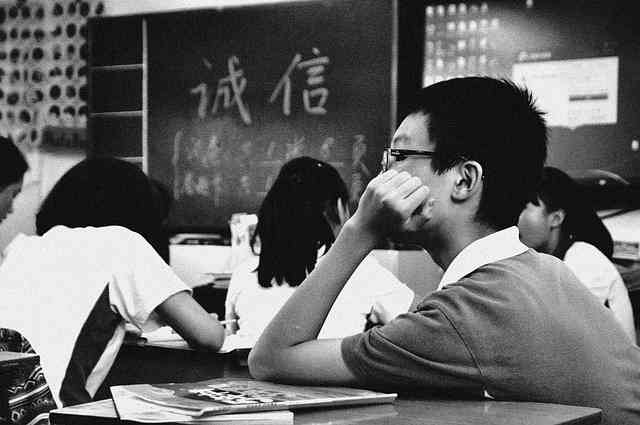In today’s diverse classrooms, effective communication plays a vital role in fostering a positive learning environment.
However, communication barriers can hinder the educational experience for both students and teachers. As educators, it is essential to address these barriers to ensure effective interaction and meaningful learning outcomes.
This article will explore the best practices for teachers to overcome communication barriers in the classroom and create an inclusive and engaging educational setting.
Definition and Types of Communication Barriers
Communication barriers refer to any obstacle that hampers the process of conveying or receiving messages effectively. These barriers can take various forms, including:
- Physical Barriers: Physical barriers encompass factors like noise, distance, or seating arrangements that impede clear communication between teachers and students.
- Language Barriers: Language barriers arise when there is a lack of shared language proficiency between the teacher and students, making it challenging to convey ideas accurately.
- Cultural Barriers: Cultural barriers stem from diverse cultural backgrounds within a classroom, leading to misinterpretations, stereotypes, or misunderstandings.
- Emotional Barriers: Emotional barriers occur when students or teachers experience emotional distress, such as anxiety, fear, or low self-confidence, impacting their ability to engage in effective communication.\
Read also: Special Education Classroom: Creating A Safe And Inclusive Environment
The Impact of Communication Barriers
 Communication barriers can have far-reaching consequences in the classroom. They can hinder students’ understanding, lead to misinterpretations, and even contribute to feelings of exclusion or disengagement.
Communication barriers can have far-reaching consequences in the classroom. They can hinder students’ understanding, lead to misinterpretations, and even contribute to feelings of exclusion or disengagement.
Additionally, teachers may face challenges in assessing students’ progress, providing feedback, or establishing a positive rapport.
Read also: Implementing Special Needs Education: Essential Strategies
Best Practices to Address Communication Barriers
To create an inclusive and effective learning environment, teachers can employ several best practices to address communication barriers:
1. Foster a Positive Classroom Environment
Creating a positive classroom environment is crucial for overcoming communication barriers. Teachers should establish trust, respect, and open communication channels that encourage students to express their thoughts and concerns freely.
2. Utilize Visual Aids
Visual aids such as diagrams, charts, or videos can enhance understanding, especially for students who face language or comprehension difficulties. These aids provide visual representations of concepts, making them accessible to all students.
3. Simplify Language
Using clear and concise language can help overcome language barriers. Teachers should avoid jargon, complex vocabulary, or idiomatic expressions that might confuse students. Instead, they should opt for simple and relatable language that facilitates understanding.
4. Encourage Active Listening
Active listening is a crucial skill that helps address communication barriers. Teachers should promote active listening among students by incorporating activities that require them to listen attentively and respond thoughtfully.
5. Embrace Multimodal Communication
Recognizing that students have different learning styles and preferences, teachers should embrace multimodal communication. This approach involves using various mediums such as text, visuals, audio, or hands-on activities to cater to diverse learning needs.
6. Provide Regular Feedback
Feedback is essential for students to gauge their progress and make improvements. Teachers should provide constructive feedback using clear and specific language, highlighting areas of improvement and offering guidance for further development.
7. Promote Collaborative Learning
Collaborative learning activities encourage students to work together, fostering communication and mutual understanding. Group discussions, projects, or peer mentoring initiatives can help students overcome communication barriers through active engagement with their peers.
8. Cultivate Cultural Sensitivity
Recognizing and appreciating cultural diversity is crucial for addressing cultural barriers. Teachers should promote an inclusive environment that respects different cultures and encourages students to share their perspectives. By incorporating multicultural content and promoting open discussions about different cultural practices, teachers can create a space where students feel valued and understood.
9. Use Technology as a Tool
Integrating technology into the classroom can help overcome communication barriers. Educational tools, online resources, and multimedia platforms can enhance engagement, facilitate language learning, and provide additional support for students with diverse needs.
10. Seek Professional Development Opportunities
Continuous professional development is essential for teachers to enhance their communication skills and strategies. Attending workshops, conferences, or online courses focused on effective communication in the classroom can provide valuable insights and practical techniques.
Read also: Supporting Student Growth In Special Needs Classes
(Frequently Asked Questions)
What are some common physical barriers in the classroom?
Physical barriers in the classroom can include excessive noise, poor seating arrangements, or large classroom size, all of which can hinder effective communication between teachers and students.
How can teachers address language barriers in the classroom?
Teachers can address language barriers by simplifying their language, using visual aids, incorporating hands-on activities, and providing additional language support for students who are non-native speakers.
What is the importance of active listening in overcoming communication barriers?
Active listening allows for better understanding, encourages empathy, and promotes effective communication by ensuring that both teachers and students are fully engaged in the conversation.
How can technology help overcome communication barriers in the classroom?
Technology can facilitate communication by providing multimedia resources, language learning tools, and opportunities for collaboration and interaction among students.
Why is cultural sensitivity important in addressing communication barriers?
Cultural sensitivity fosters an inclusive classroom environment where students from diverse cultural backgrounds feel valued and understood. It promotes respect, appreciation, and effective communication among students and teachers.
Conclusion
Addressing communication barriers in the classroom is crucial for creating an inclusive and effective learning environment. By understanding the various types of barriers and implementing best practices such as fostering a positive classroom environment, utilizing visual aids, simplifying language, encouraging active listening, and embracing multimodal communication, teachers can ensure that all students have equal opportunities to learn and thrive. By nurturing effective communication, teachers lay the foundation for academic success and holistic development among their students.






